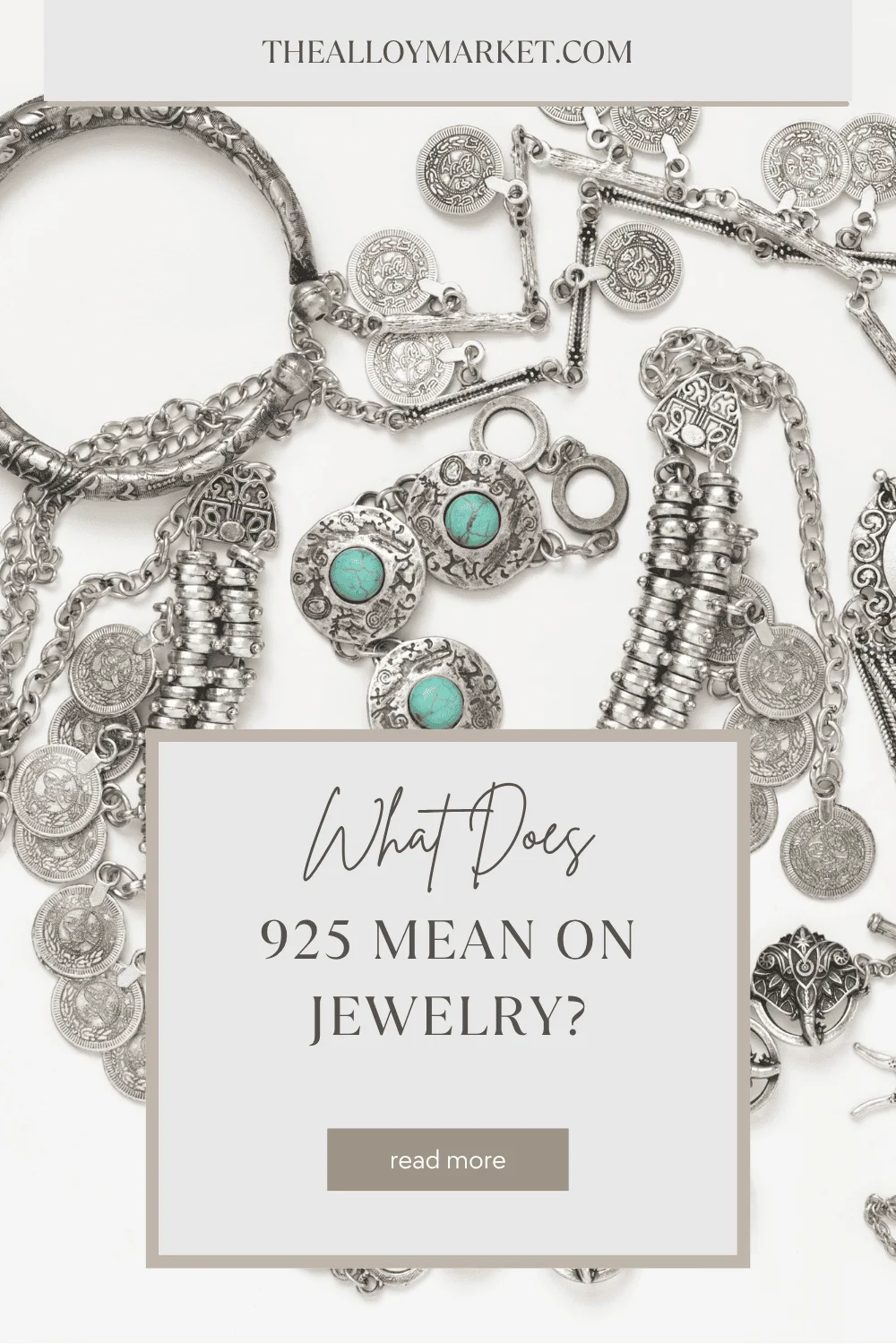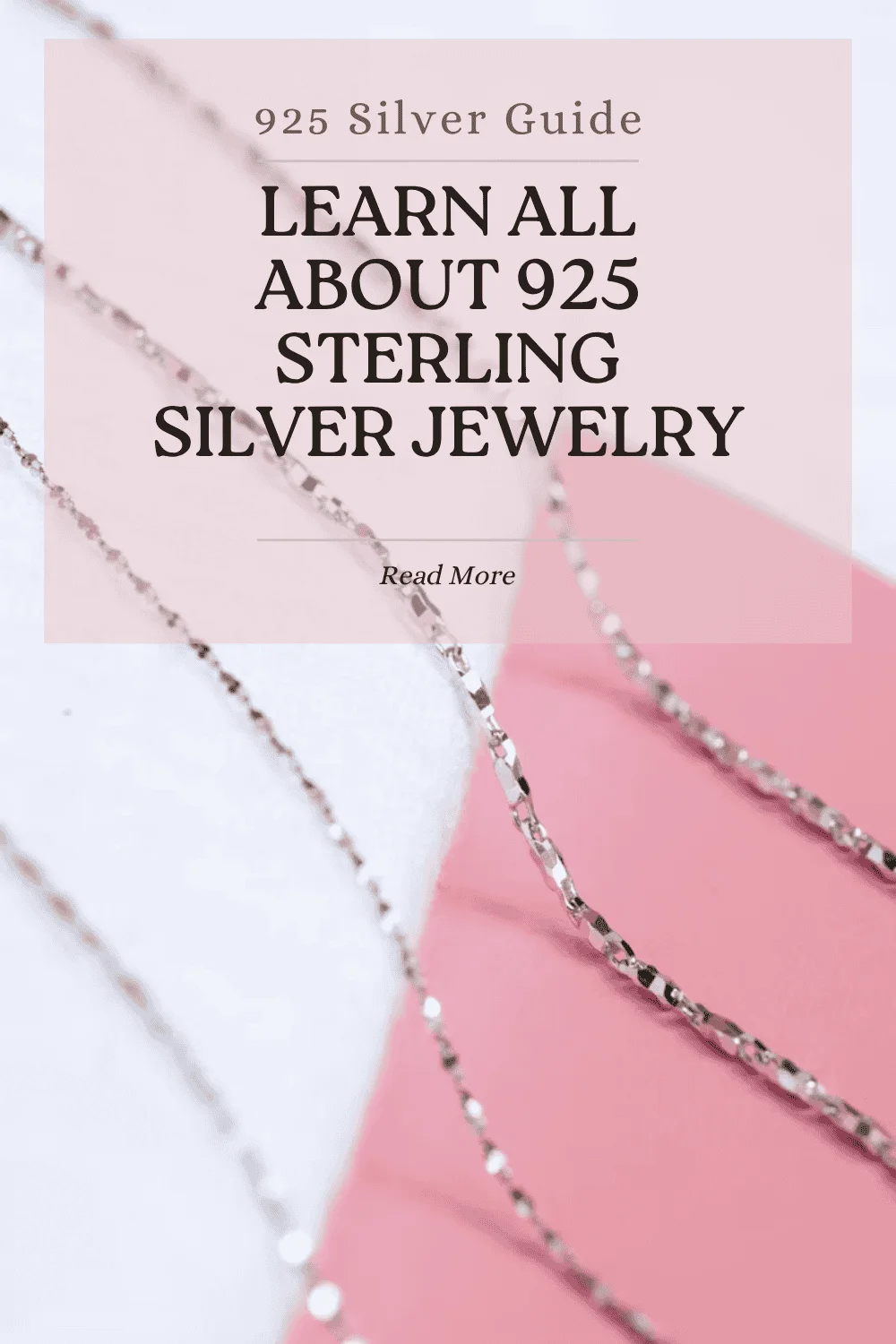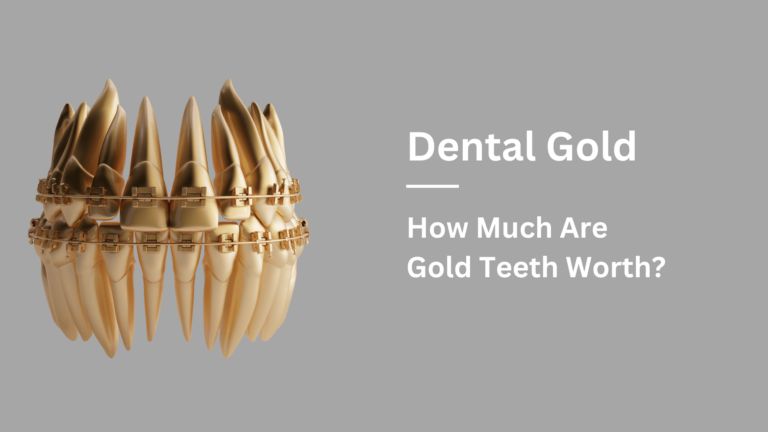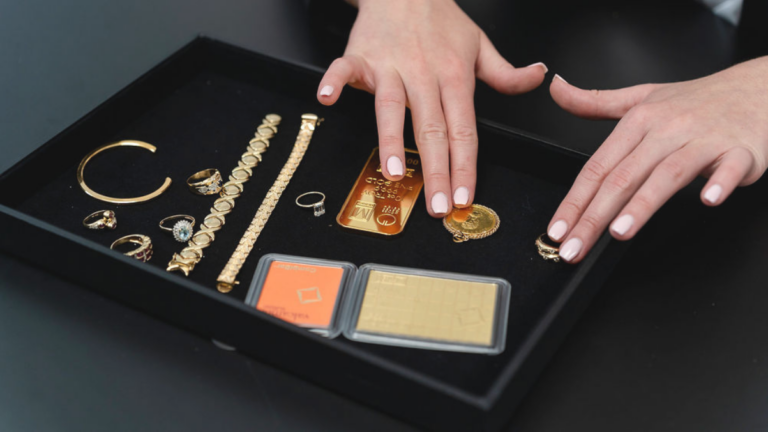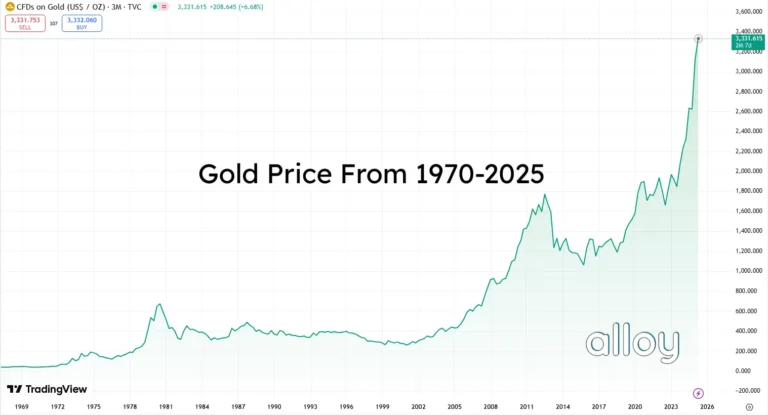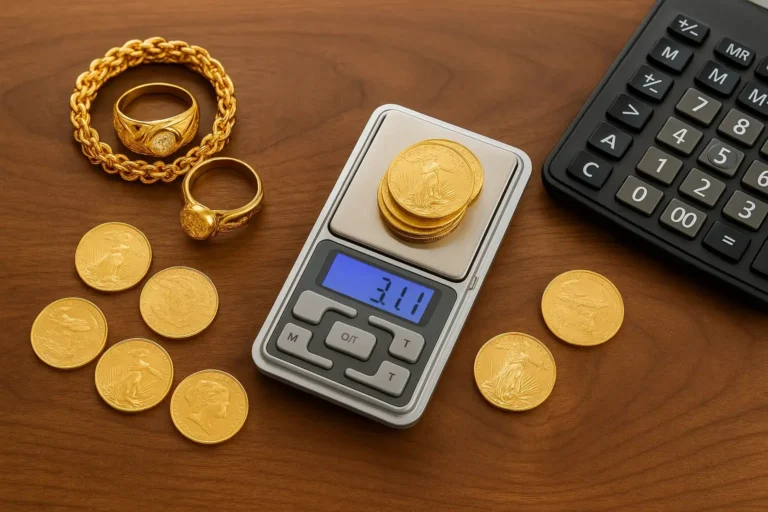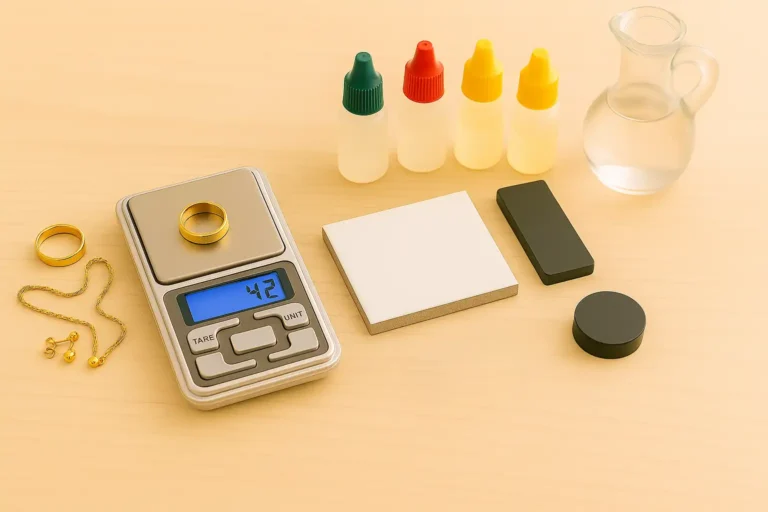What Does 925 Mean on Jewelry?

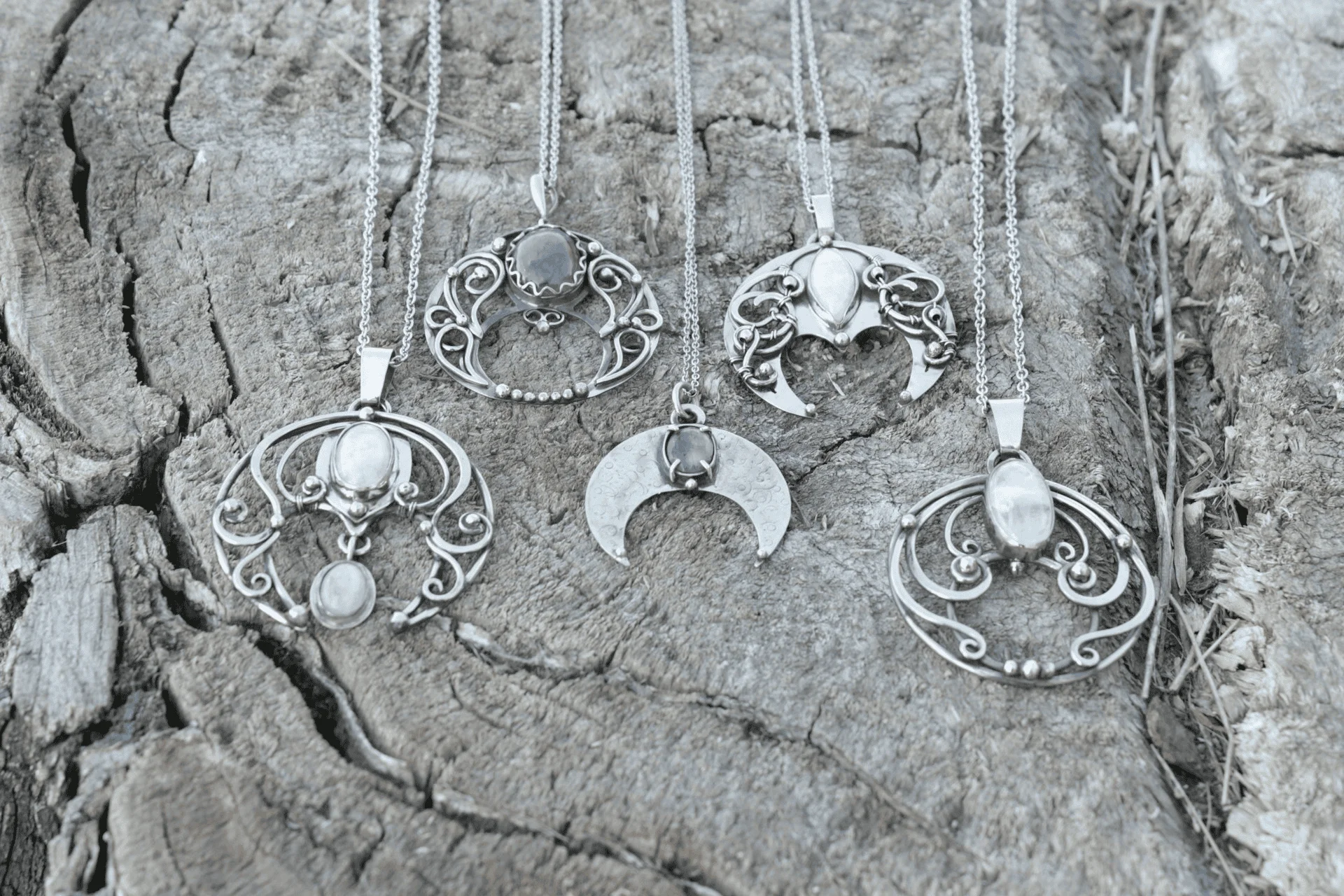
Understanding the numbers stamped on your jewelry matters, especially when you want to sell or appraise pieces. These tiny markings reveal crucial details about what your jewelry contains and how much it might be worth.
“What does 925 mean on jewelry?” is a common question we get. This marking indicates you have a piece made of sterling silver. Below, we’ll explore it further and decode other symbols you might find alongside it.
In a Nutshell
Silver jewelry with a 925 stamp is sterling silver, meaning it is made from 92.5% silver and another metal added for durability. Gold jewelry stamped with “925” indicates that it is made of sterling silver but plated with a thin layer of gold. Other hallmarks may be present alongside a 925 stamp, indicating the country of origin or designer. Some may also indicate what gemstone the ring holds.
History of the 925 Mark
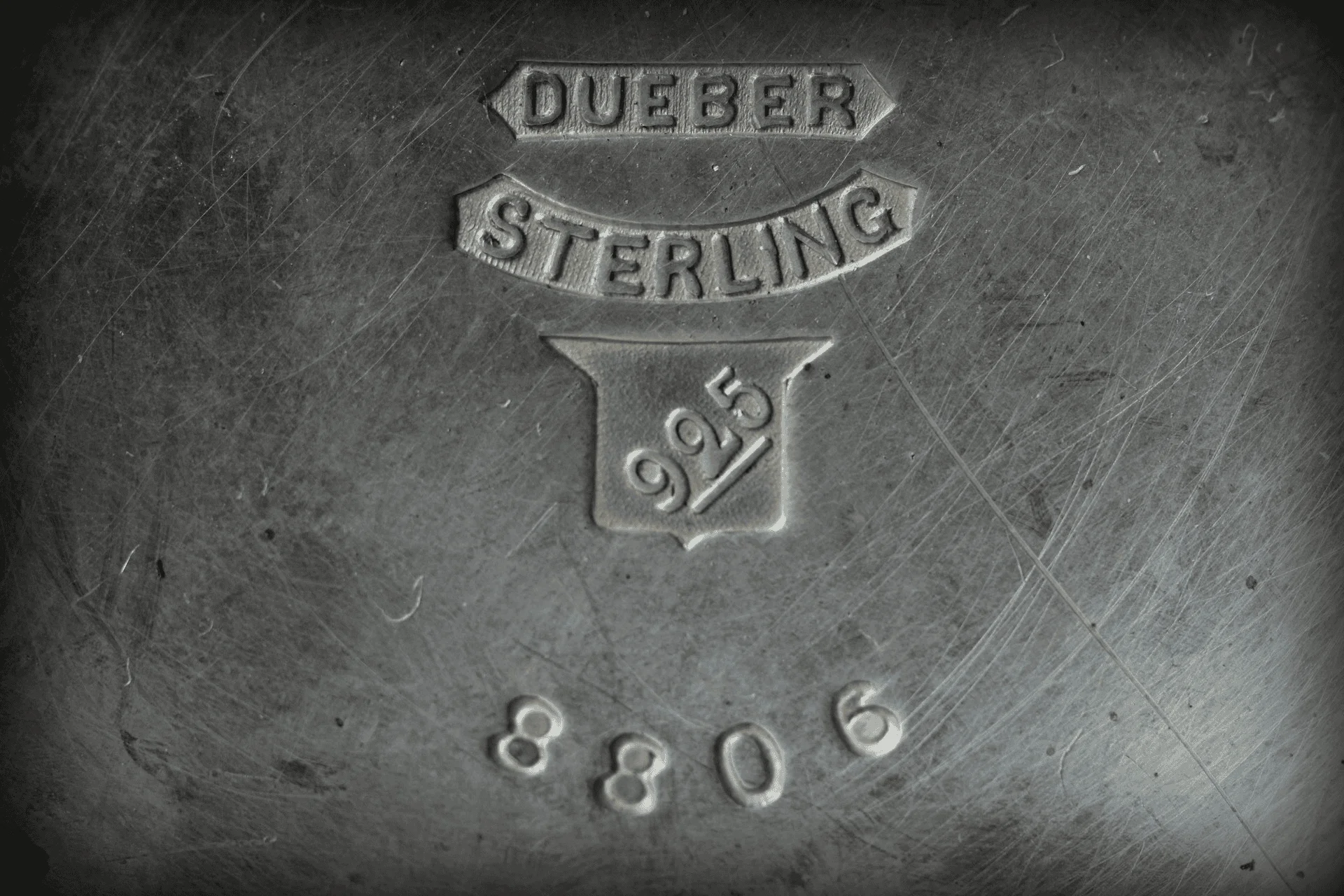
For centuries, countries have used their own standards to define the quality of silver. These variances created confusion when people bought silver pieces from different regions. They couldn’t tell if they were getting high-quality silver or not.
The 925 mark emerged as a solution to this problem. By establishing a universal standard, 92.5% pure silver content, the marking system eliminated guesswork for buyers and sellers across borders.
This standardization became especially important as global trade expanded. Today, the 925 mark is used to identify sterling silver quality worldwide. But you should still verify authenticity when buying valuable pieces.
925 on Silver Jewelry
925 on silver jewelry tells you the piece contains sterling silver (as opposed to silver-plated or lower-quality alternatives).
Sterling silver strikes the perfect balance between quality and durability for jewelry. Let’s look at what makes this composition so effective and why sterling silver has become the go-to choice for both jewelers and buyers.
Composition and durability
As we briefly touched on earlier, sterling silver contains 92.5% pure silver and 7.5% other metals, typically copper, to enhance its strength. But this copper addition does much more than make the metal harder. It completely changes how silver behaves in everyday use.
Pure silver bends and scratches with minimal pressure, making it impractical for rings or bracelets that need to hold their shape. Copper creates an alloy that can withstand daily wear while maintaining the beautiful appearance of silver.
The downside is that it can cause tarnishing when exposed to air and moisture. The good news is, this dark film doesn’t damage the metal, and you can remove it with polishing.
Benefits of sterling silver
In addition to durability, sterling silver offers several advantages that make it appealing for jewelry buyers:
- Hypoallergenic for most people: True sterling silver rarely causes skin reactions because it doesn’t contain nickel.
- Bright luster and polishable: Even when it tarnishes, you can restore the brilliance with a soft cloth.
- Affordable alternative to gold or platinum: It makes quality jewelry accessible while providing lasting value.
925 on Gold Jewelry
A 925 stamped on gold-colored jewelry can be misleading. So, below, we’ll break down how gold and silver marking systems work and what these combinations mean in terms of value.
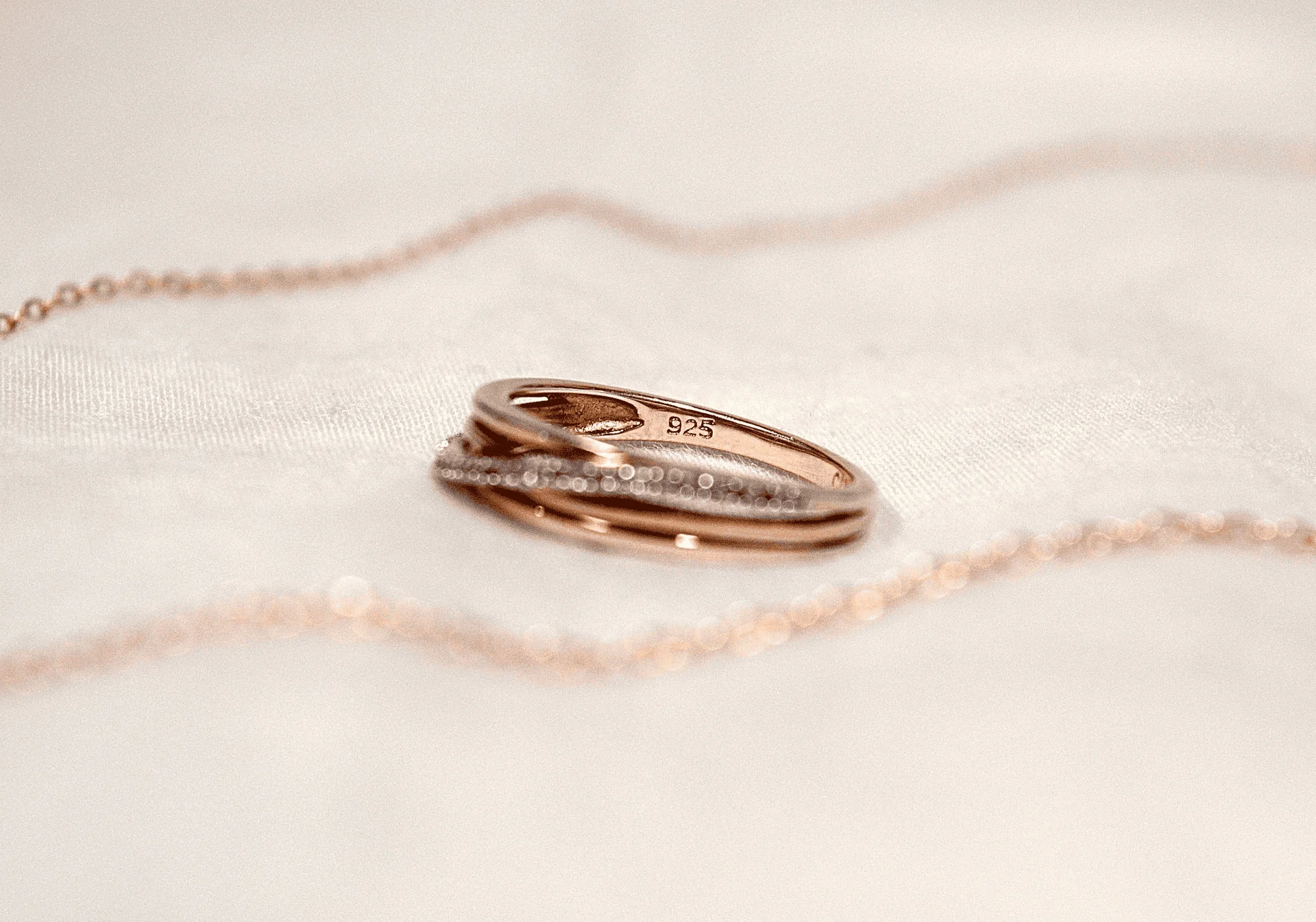
Understanding gold and silver alloys
Gold and silver use separate marking systems to measure their purity. Gold markings show purity using karats (e.g., 10K, 14K, 18K) or numerical equivalents (e.g., 417, 585, 750). Silver markings, such as 925, reflect the percentage of pure silver in the alloy.
When you see ‘925’ on gold-colored jewelry, the piece typically has a sterling silver base with gold plating applied on top. This technique, when done correctly, uses real gold but only as a thin surface layer. The 925 marking refers to the silver underneath, not the gold you see.
These pieces cost much less than solid gold because most of the metal is silver. The gold layer can wear off over time, revealing the silver base. Solid gold pieces maintain their color and value because the gold is evenly distributed throughout the metal.
Decoding Additional Markings and Symbols
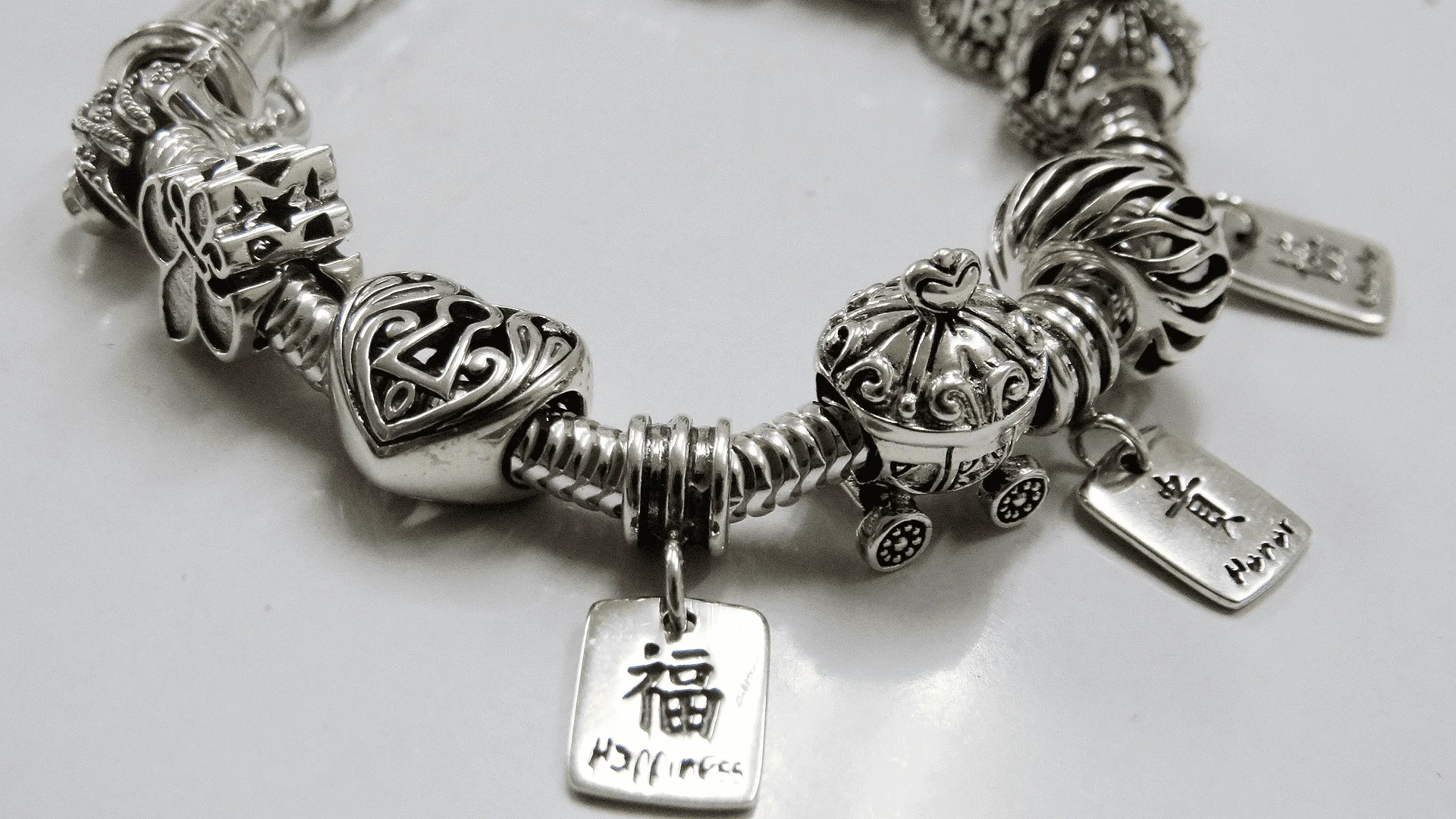
Beyond the basic 925 stamp we’ve covered, jewelry often contains additional letters and numbers that give more details about the piece.
Here are some common ones you’ll encounter:
- 925 10K or 925 AU indicates gold vermeil, which is sterling silver with a gold plating on top. The 10K refers to the gold layer’s purity, while 925 describes the silver base underneath. AU is gold’s chemical symbol.
- 925 ALE identifies authentic Pandora jewelry made from sterling silver. ALE represents the initials of the founder’s father, Algot Enevoldsen.
- 925 CZ means sterling silver jewelry set with cubic zirconia stones.
- 925 Italy or 925 CN shows where the piece was manufactured (Italy and China, respectively). Country markings help you research the maker and set appropriate expectations for both quality and price.
Now, let’s examine each category of these markings in more detail to help you decode any combination you might find.
Purity
Since we’ve covered how gold and silver marking systems work differently, let’s focus on what specific purity combinations mean for value:
- When you see “925 10K,” the piece has sterling silver as the base metal with 10-karat gold plating applied on top. The plating creates durable wear resistance, but the gold appears paler than higher karat options.
- “925 14K” (higher gold content) offers a warmer color than 10K with good durability. It balances appearance and longevity while staying reasonably priced for gold vermeil pieces.
- The highest quality combination is “925 18K” (or “925 750”), which gives you a rich gold color closest to pure gold. However, it’s softer and more prone to wear. Additionally, this higher-purity plating is more expensive.
Ultimately, the trade-off is between appearance, durability, and price. Higher karat gold offers better color but lower durability and higher cost.
Manufacturers
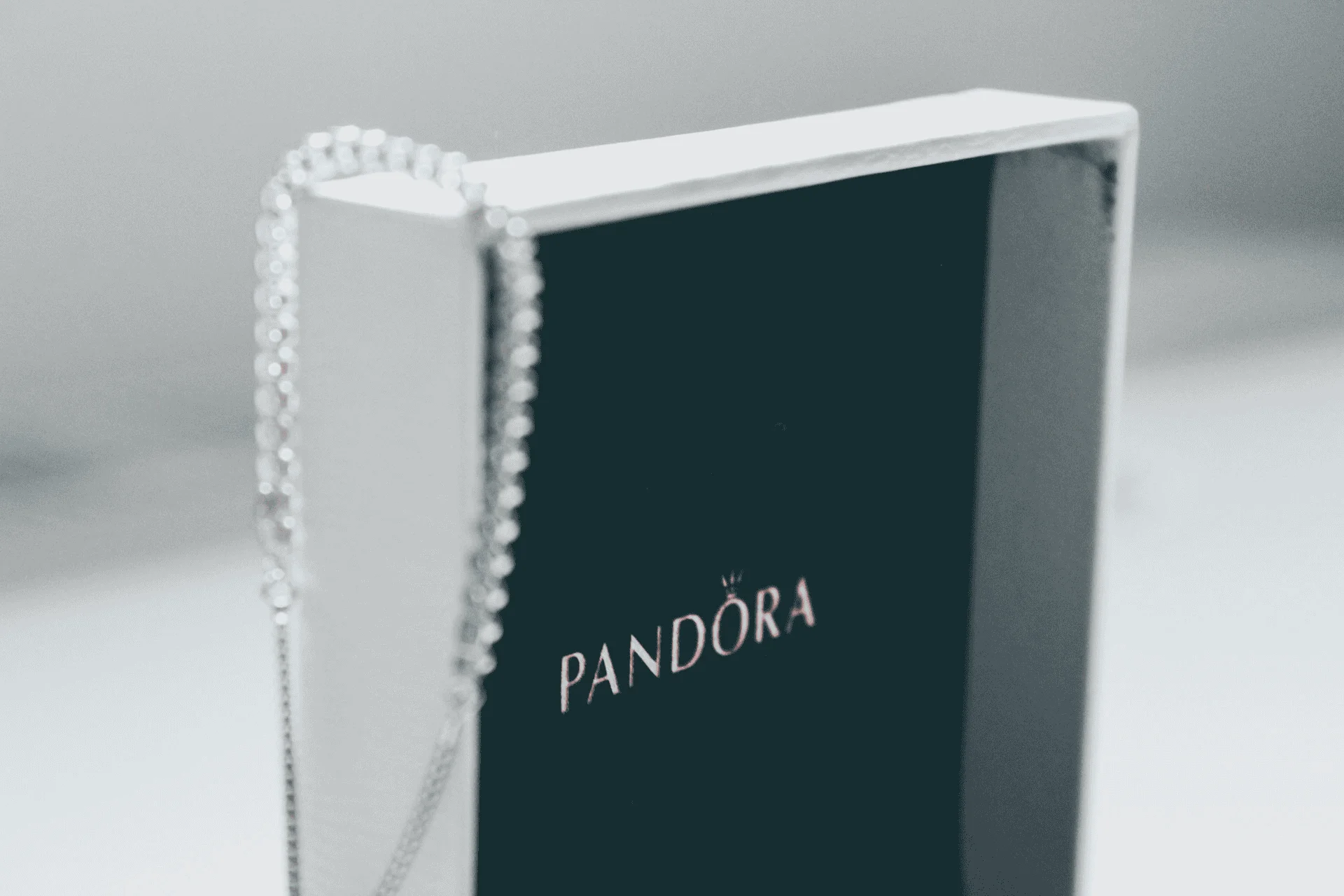
Manufacturer marks stamped alongside 925 help you identify who made your jewelry.
Here are some common ones you’ll see:
- ALE – Pandora
- CJ – Charles Jewelers
- DY – David Yurman
- FZN – Fuzion Creations International
- T & Co. – Tiffany & Co.
- VCA – Van Cleef & Arpels
Recognizing these marks helps you research the maker and verify authenticity when buying or selling.

Have 925 silver to sell?
Request a free Alloy Appraisal Kit, ship from home, and receive a same-day offer after appraisal.

Have 925 silver to sell?
Request a free Alloy Appraisal Kit, ship from home, and receive a same-day offer after appraisal.
Gemstones and abbreviations
Jewelry often includes abbreviated codes that tell you about stones or metal treatments used alongside 925 sterling silver.
Here are some abbreviations* you may find:
|
Gemstone abbreviations |
Metal treatment abbreviations |
|
CZ – Cubic Zirconia (diamond simulant) |
AU – Gold plated (from gold’s chemical symbol) |
|
D – Diamond |
GP – Gold-plated |
|
RUBY – Ruby |
GF – Gold-filled |
|
AMEH – Amethyst |
PT or PLAT – Platinum |
|
EMRD – Emerald |
V – Vermeil (gold-plated sterling silver) |
*This isn’t an exhaustive list, as manufacturers sometimes use unique abbreviations. If you encounter an unfamiliar code, a jeweler can help identify its meaning.
Country of origin
Country markings stamped with 925 tell you where the jewelry originates. However, you need to distinguish between actual country codes and manufacturer marks that look similar.
Here are a few country markings you may see frequently:
- CN signifies jewelry made in China, a major jewelry manufacturing hub worldwide.
- Italy shows Italian craftsmanship, known for high-quality work.
- DENMARK appears on pieces from manufacturers like Georg Jensen, indicating Danish origin.
Tip:
When in doubt about any marking, a jeweler or appraiser can help verify the origin and value implications.
Which countries have a hallmark system?
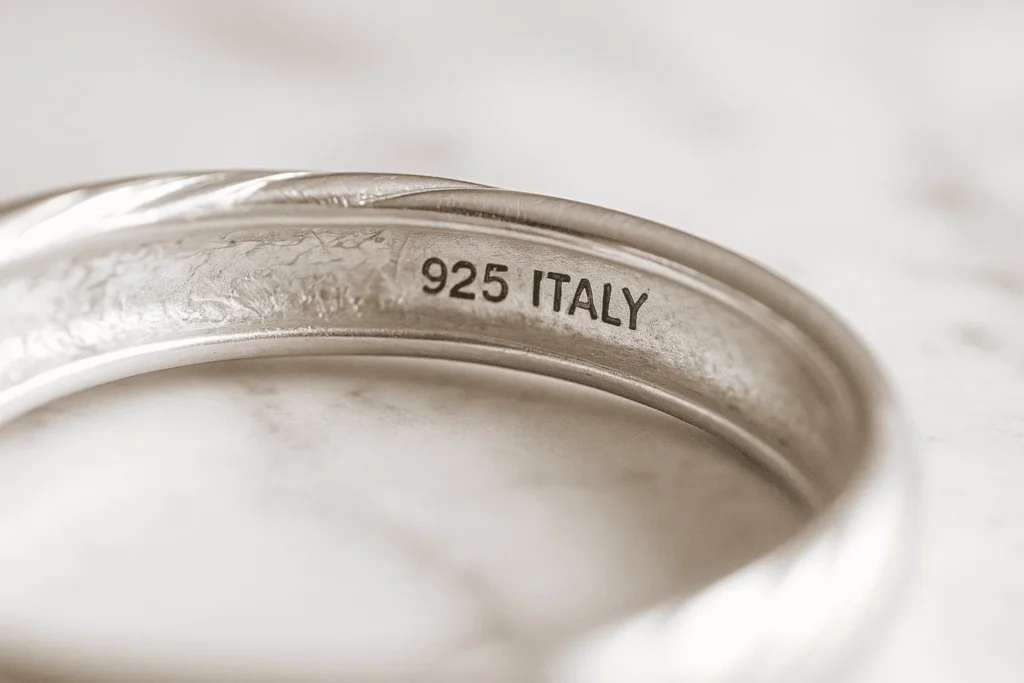
Hallmarking systems exist worldwide, but requirements vary between countries. Some nations legally require hallmarks on precious metals, while others make them voluntary or rely on manufacturer standards.
The following countries have mandatory hallmarking:
- The United Kingdom has one of the oldest systems, with four official assay offices that legally enforce hallmarks.
- India requires hallmarking for gold jewelry through the Bureau of Indian Standards (BIS).
- France uses a complex system of pictorial marks with mandatory guarantees for precious metals.
And these countries have voluntary systems:
- The United States makes hallmarking optional, but the Federal Trade Commission enforces accuracy standards.
- Australia has a voluntary system that generally follows European standards.
A table with meanings: Common 925 marking combinations
Here’s a quick reference table that puts all the combinations together in one place for easy lookup when you’re examining your jewelry:
|
Marking |
Meaning |
|
925 10K |
Sterling silver with 10-karat gold plating (gold vermeil) |
|
925 14K |
Sterling silver with 14-karat gold plating (gold vermeil) |
|
925 18K / 925 750 |
Sterling silver with 18-karat gold plating (gold vermeil) |
|
925 AU |
Sterling silver with gold plating (AU = gold’s chemical symbol) |
|
925 ALE |
Authentic Pandora sterling silver jewelry |
|
925 CZ |
Sterling silver set with cubic zirconia stones |
|
925 Italy |
Sterling silver made in Italy |
|
925 CN |
Sterling silver made in China |
|
S925 |
Modern version of the sterling silver marking |
Where Can I Sell 925 Jewelry?
Alloy doesn’t just buy gold; we also buy other precious metals, including 925 jewelry. We provide a free, no-obligation appraisal when you request an Alloy Kit. It is shipped to you right away. Inside, you’ll find a pre-paid parcel that includes tracking and insurance for your valuables.
Drop your items in the mail, and when they arrive at Alloy, we assess them right away. Once the evaluation is complete, we will send you an offer. When you accept, we initiate payment the same day. If you don’t wish to accept the offer, we will return your items to you at no cost.
Thousands trust Alloy for their gold buying needs. We want to be your go-to destination for buying precious metals. Request your free kit today!



